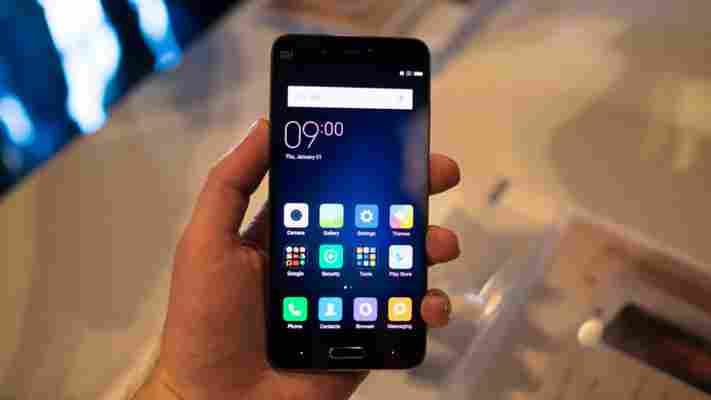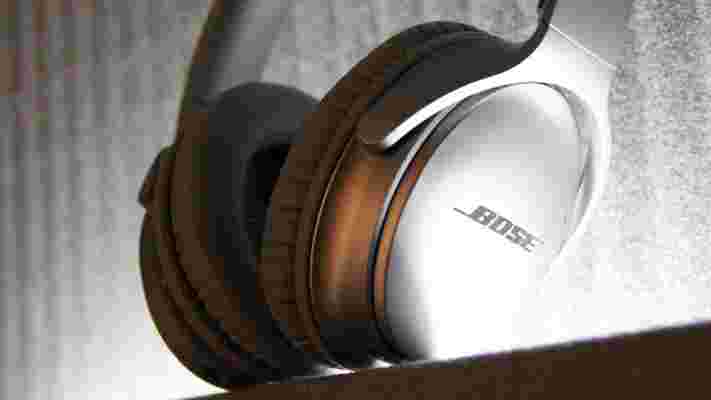Xiaomi Mi 5 first impressions: A phone I want but can’t have
Xiaomi showed off its new Mi 5 Android phone at Mobile World Congress in Barcelona today, and it’s an impressive device for a surprisingly low price starting at just $305 USD.

The Mi 5 is a 5.15-inch smartphone sandwiched in glass (or ceramic, on the high end) that looks stunning, though somewhat similar in appearance to the Samsung Galaxy S7.
For an Android manufacturer it’s a breath of fresh air to see a company like Xiaomi taking design so seriously. If you didn’t know any better, you could be mistaken at a distance that this is a high-end Apple or Samsung phone — it looks that good.
Xiaomi’s Hugo Barra spent a lot of time during the keynote today touting that there’s a fingerprint sensor on the front that doesn’t waste space, and that the camera on the back is flush with the body.
That’s an important differentiator for the company, which specifically called out both Apple and Samsung for not solving the problem in their own devices.
It feels solidly built in your hand and it’s a good size for using with just one hand, rather than two. Best of all, it feels light — weighing in at 129g — which is immediately apparent as you pick it up, though it’s just 14g lighter than an iPhone 6s.
Most of all Xiaomi has built something that’s distinctly its own. Sure, it somewhat resembles the Samsung Galaxy S7, but the curved glass back along with the ceramic option show that the company has come into its own for design rather than just emulating what’s already out there.
One thing worth considering is that the glass backed version is a fingerprint magnet, so if that bothers you it’s worth considering the ceramic version instead — but that comes with a price premium.
We were only able to try the Mi 5 for a short amount of time, but it was impressively fast, with no perceptible lag opening the camera or performing the kind of tasks you’d be doing every day.
That’s thanks to the Snapdragon 820 inside and 4GB of RAM, which really shows when you’re using the phone. It’s hard to say how good that’ll be long term, but it’s a great start.
The camera is incredibly responsive and takes snaps without any noticeable lag. Image quality seemed pretty good, though it’s hard to say without spending more time with the phone.
Barra spent a good chunk of the presentation touting the ‘flagship’ camera and demoted impressive example shots from its 16-megapixel shooter, but what phone maker doesn’t? We’ll need to look into this area more later, but it does look promising.
For the price, the Mi 5 an incredible phone that delivers great performance and quality for such a low price — it would retail for about $305 USD if it were available outside China.
What’s amazing here is that a small Chinese manufacturer that hasn’t even gone global yet is leading the pack with a high performance, well designed smartphone for a low price. Instead of just following, Xiaomi showed today that it can actually lead the smartphone discussion.
That’s the rub: if you want one of these, you’re going to have a really hard time getting it.
Xiaomi is only releasing the Mi 5 in China right now, with India to follow and a vague “elsewhere” later on, but the company is yet to officially release any devices in Europe or the United States — but I’m hoping this will find its way there.
Android N preview starts its slow rollout beyond Nexus devices
It might have only been last month (hint, it was ) that Google announced the Android N Developer Preview for Nexus devices, but the company has been working with Sony to make it available to Xperia Z3 owners now too.

While that leaves most of a billion users without the ability to test it out just yet, there will be a few happy owners out there who can get a look at the upcoming features.
Among the headline additions are a stock split-screen mode, improved notifications, a night mode, a quicker way to switch between apps and a whole lot more.
Whether or not the fact that Android N is rolling out to Sony’s handset ahead of other non-Nexus devices suggests that the company is in line to make this year’s devices, we’ll leave up to you.
Why Bose’s new wireless headphones should always be in your hand luggage
Don’t you wish you could turn off the world every now and then?

The last few weeks I’ve found out it’s actually possible… at a price.
Enter any airport around the world and you’ll see loads of people wearing either Bose’s QC15 or QC25 headphones — for a reason. Their omnipresence in planes is because of their best feature: Acoustice noise cancellation (ANC), an impressive use of technology protected by a lot of patents.
With Bose’s Quiet Comfort 35 , they’re evolving their product line by cutting the cable.
ANC makes sure that once you put on the QC35, the sound of your surroundings get turned down to a whisper. Once you put on some music, it’s completely gone. It’s nice when you’re working in a noisy office, but turns into something essential when you’re on a plane.
Flying is fun, but there’s a lot of noise involved.
It might be a baby seated three rows behind you or airplane motors next to your window seat. When I put the headphones on during a flight, it was just me and the music. Even when you get tired of listening to music, the ANC works to create a cone of silence in an otherwise very hectic environment.
All in all, the QC35 makes for a great travel companion.
Bose supplies a protective case that holds the headphones and has a pocket for the backup- and charging cable. Wrap them up, put them in their protective case and slip them in your hand luggage. No more noisy flights for you.
Sound
If you’re not a total audiophile, the QC35 sounds really good for high-end headphones.
It shines with all kinds of music and if you’re used to cheaper headphones, you’ll be pleasantly surprised with the overall sound it produces.
Design and comfort
Simple and sleek, on the edge of being a bit formal.
The combination of metal and glassed-filled nylon feels premium, just like the padded headband. It’s light enough to be worn for hours without irritating, but heavy enough not to slip off your head. The entire product feels very sturdy and all movable parts seem like they’re not breaking anytime soon.
Noise cancellation
The noise cancelling feature works ridiculously good.
Bose owns a large amount of patents making them almost unbeatable in this space. Put them on, and your environment practically disappears — it’s simple like that.
Battery and connectivity
Everything works as it’s supposed to — connecting quickly and without trouble to any laptop or smartphone.
The usage of Bluetooth 4.1 means the battery takes a long time to drain. Bose says it’s possible to get up to 20 hours of wireless listening, or 40 hours with the supplied backup wire, and in my tests this accurately reflect the actual performance.
Should you buy them?
All good things come at a price — $350 to be exact.
That’s a lot of money, but it might be worth it if you’re looking for great all-round headphones with excellent noise cancellation.
